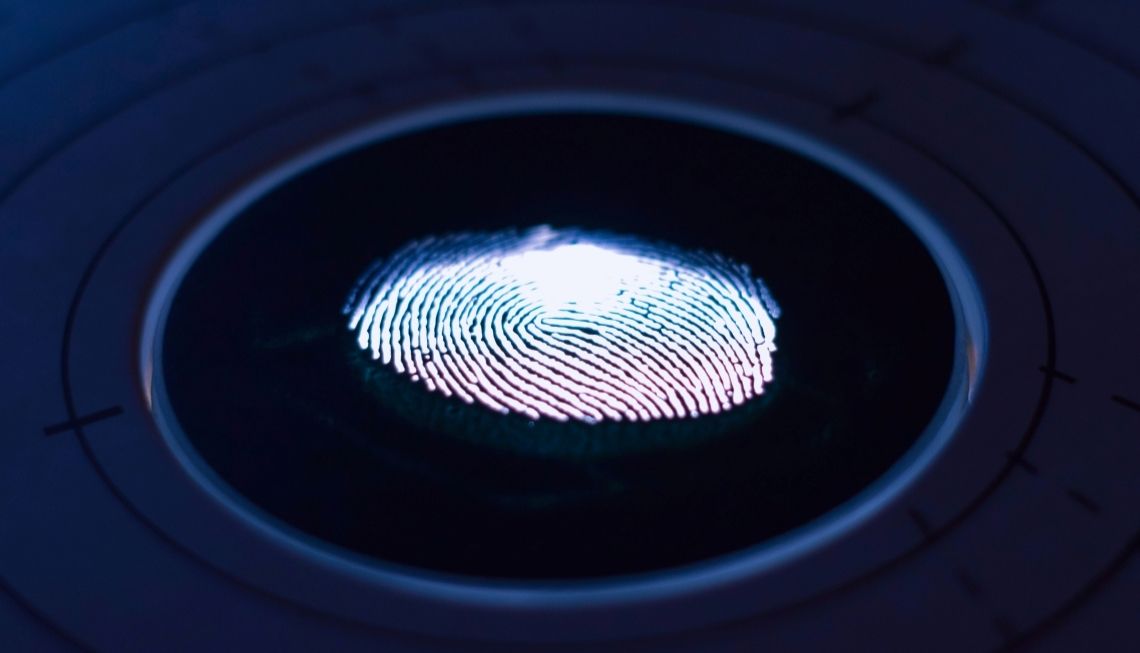Why biometrics is the new frontier of public and digital safety
By NEC
Interview with Walter Lee, Evangelist and Head of Public Safety Consulting at NEC Asia Pacific, on how biometrics can keep us safe.

While movie lovers might have been awed by the futuristic tech that only existed in imaginary worlds, it is now a reality. Biometrics is everywhere in our lives—from unlocking our phones to getting past immigration control.
In a post-pandemic era with new health and security threats, how can we use biometrics to protect our public and digital safety? Walter Lee, the Head of Public Safety Consulting at NEC, shares how biometrics can keep us safe in both the physical and online world.
Contactless security in a post-pandemic normal
Contactless is the new buzzword introduced by the Covid-19 pandemic, as citizens grew hyper-aware of interacting with common touch points and surfaces.
From the rise of e-payments to robots delivering food to your doorstep, contactless technology has taken the world by storm. Public safety is not an exception. How can digital technology help public security measures adapt to a contactless, post-pandemic normal?
The answer lies in biometrics, Lee says. It analyses our physical characteristics, such as the face, fingerprint, and iris, to confirm our identity. This tech has been around for years, but the pandemic has introduced new challenges.
First, using fingerprints for checks during the pandemic may raise health concerns due to the need to minimise contact and the spread of viruses. This has led to an accelerated push towards facial recognition instead. Second, facial recognition systems need to work with facial masks, especially in areas where masks are still compulsory.
Biometrics has to evolve with these new challenges. The Hawaii Department of Transportation has collaborated with NEC to combine facial biometrics and thermal screening at airports.
The system will automatically capture a picture of travellers whose temperatures exceed a certain level, even if they are wearing masks. The picture is then sent to airport authorities, who can quickly stop the travellers from potentially spreading viruses to others.
With the rise in contactless payment, cards are no longer in fashion. NEC has also collaborated with a Taiwanese bank to introduce facial recognition checks at physical ATMs. Even without bringing your bank card, you can still withdraw cash securely by just scanning your face and entering your pin.
Securing our digital identity with biometrics
In this digital age, people spend as much time on the Internet as they do outside. Netflix has replaced cinemas, while Zoom has replaced physical meetings.
But people are more vulnerable in cyberspace than in the real world, Lee warns. They exchange personal data like mobile numbers and addresses to access online services. But in doing so, they also expose themselves to the threats lurking in the digital world.
And the risks in cyberspace are significantly higher. There are immigration officers guarding the airport borders against criminals. But when people are in a remote environment like the digital world, there is no one actively filtering out these risks, he explains.
One of those risks is digital identity fraud. It happens when someone steals personal data online and uses it for harmful activities, such as breaking into others’ bank account.
The consequences can be serious, especially when financial transactions are involved. This was the case with the recent phishing scams in Singapore where approximately S$13.7 million was reportedly lost by close to 800 banking customers, CNA reported.
How can governments ensure that the citizens accessing those services are real and not scammers? One such solution lies in using biometrics to verify their digital identities.
India has rolled out a National Digital Identity programme, the Aadhaar Programme. NEC helps to secure it with a biometrics system to help India’s 1.3 billion citizens access government services efficiently.
By analysing the citizens’ fingerprints, faces, and irises, the system ensures that the same person is not registered twice to avoid duplicates.
Biometrics also ensures that the digital identity accessing an online government service is the same as the person’s real identity. While it’s possible for digital signatures to be replicated and passwords to be stolen, biometric data can only be traced back to a single person, Lee explained at the Safe Cities Summit.
Guarding against identity spoofing
But as technology advances, biometrics faces new threats from presentation attacks, otherwise known as identity spoofing. This happens when a cyberattacker pretends to be someone else through photographs, masks, or video replays. “All biometrics are susceptible to spoofing as well”, Lee emphasised.
There are many ways in which a fraudster will attempt identity fraud using presentation attacks or spoofing techniques.
To confront this threat, NEC’s facial recognition uses liveness detection to ensure that the subject is a real person behind the camera, and not a spoof. While the human eye may be tricked, NEC’s machine learning algorithm will not—it can analyse the data collected by the biometric scanners and verify that the person is indeed real.
Ensuring data transparency
Data privacy is increasingly a concern. “The pandemic accelerated the need for us to [provide] certain critical data… while respecting individual data privacy,” Lee shares. These data include health data like our vaccination and infection status for Covid-19 tracking.
The “Guide on the Responsible Use of Biometric Data in Security Applications” published by the Personal Data Protection Commission, Singapore is a good example of how to utilise biometrics while maintaining data privacy.
There is also a growing trend towards the use of “white-box” AI, such as dotData, which allows data analysts to visualise the AI algorithm. White-box AI models allow users to see how AI processes create the final result, as opposed to black-box models which are less transparent.
There are more invisible threats around us—from viruses floating in the air to lurking cyberattackers online. But biometrics play an essential role in protecting us, be it in the public or digital space.